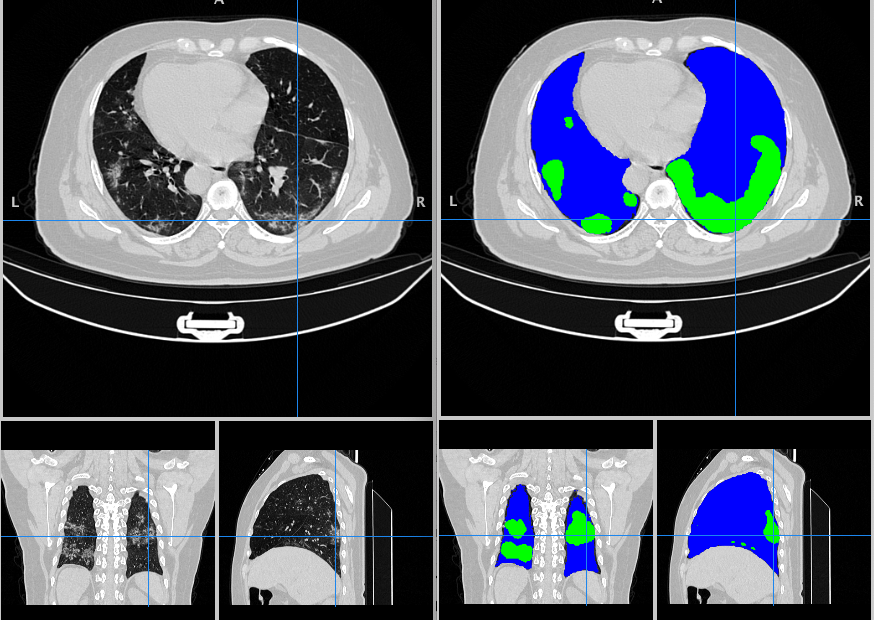Purpose. This study aims at exploiting artificial intelligence (AI) for the identification, segmentation and quantification of COVID-19 pulmonary lesions. The limited data availability and the annotation quality are relevant factors in training AI-methods. We investigated the effects of using multiple datasets, heterogeneously populated and annotated according to different criteria.
Methods. We developed an automated analysis pipeline, the LungQuant system, based on a cascade of two U-nets. The first one (U-net1) is devoted to the identification of the lung parenchyma; the second one (U-net2) acts on a bounding box enclosing the segmented lungs to identify the areas affected by COVID-19 lesions. Different public datasets were used to train the U-nets and to evaluate their segmentation performances, which have been quantified in terms of the Dice Similarity Coefficients. The accuracy in predicting the CT-Severity Score (CT-SS) of the LungQuant system has been also evaluated.
Results. Both the volumetric DSC (vDSC) and the accuracy showed a dependency on the annotation quality of the released data samples. On an independent dataset (COVID-19-CT-Seg), both the vDSC and the surface DSC (sDSC) were measured between the masks predicted by LungQuant system and the reference ones. The vDSC (sDSC) values of 0.95±0.01 and 0.66±0.13 (0.95±0.02 and 0.76±0.18, with 5 mm tolerance) were obtained for the segmentation of lungs and COVID-19 lesions, respectively. The system achieved an accuracy of 90% in CT-SS identification on this benchmark dataset.
Conclusion. We analysed the impact of using data samples with different annotation criteria in training an AI-based quantification system for pulmonary involvement in COVID-19 pneumonia. In terms of vDSC measures, the U-net segmentation strongly depends on the quality of the lesion annotations. Nevertheless, the CT-SS can be accurately predicted on independent test sets, demonstrating the satisfactory generalization ability of the LungQuant.
Authors: Francesca Lizzi, Abramo Agosti, Francesca Brero, Raffaella Fiamma Cabini, Maria Evelina Fantacci, Silvia Figini, Alessandro Lascialfari, Francesco Laruina, Piernicola Oliva, Stefano Piffer, Ian Postuma, Lisa Rinaldi, Cinzia Talamonti and Alessandra Retico
Published paper: Lizzi F, Agosti A, Brero F, Cabini RF, Fantacci ME, Figini S, et al. Quantification of pulmonary involvement in COVID-19 pneumonia by means of a cascade of two U-nets: training and assessment on multiple datasets using different annotation criteria. Int J Comput Assist Radiol Surg 2021. https://doi.org/10.1007/s11548-021-02501-2
